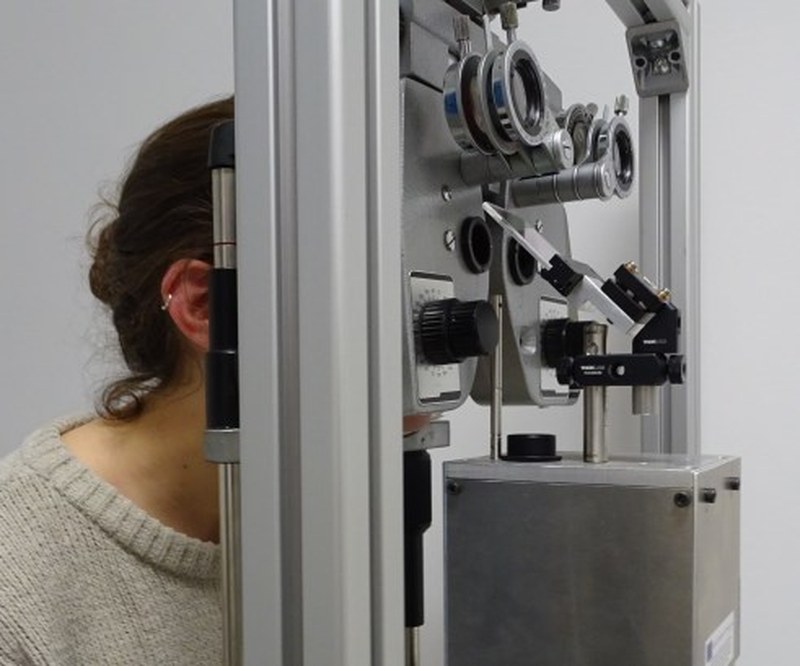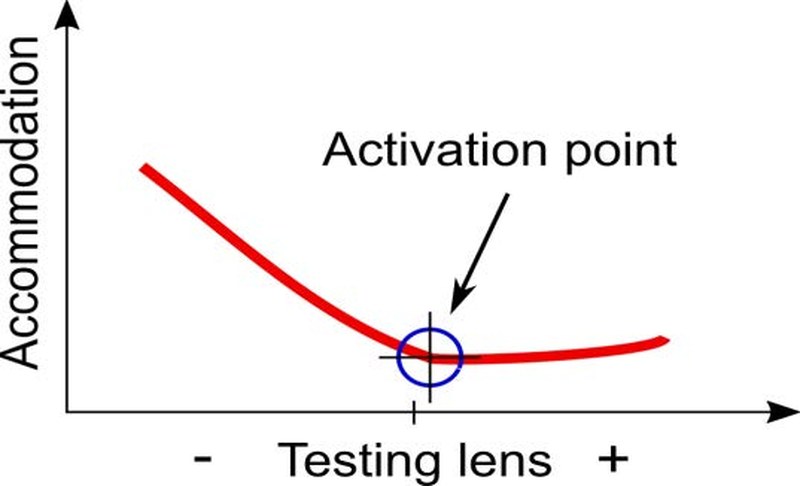Assessment of accommodation from real-time monitoring of the refractive state of the eye. MKT2021/0178_G
A new method and computer program for characterizing ocular accommodation have been developed. The method comprises measuring spherical refractive errors of an eye for different additional optical powers with respect to reference refraction: calculating the behavior of an accommodation signal of the eye and analyzing the behavior of the accommodation signal. Partners to further develop the system and/or to establish commercial agreements along with technical cooperation are sought. Ref. MKT2021/0178_G
Assessment of accommodation from real-time monitoring of the refractive state of the eye. MKT2021/0178_G
A new method and computer program for characterizing ocular accommodation have been developed. The method comprises measuring spherical refractive errors of an eye for different additional optical powers with respect to reference refraction: calculating the behavior of an accommodation signal of the eye and analyzing the behavior of the accommodation signal. Partners to further develop the system and/or to establish commercial agreements along with technical cooperation are sought. Ref: MKT2021/0178_G
El repte/The challenge
Accommodation (i.e., the capacity of the eye to focus at different distances) must be avoided during subjective refraction to find the right combination of lenses that compensates for the ocular ametropia (myopia, hypermetropia, and astigmatism). In children and young adults, control of accommodation is a challenging task due to their involuntary tendency to accommodate. Accommodation is usually controlled by instilling cycloplegic drops to temporally paralyze the ciliary muscle (however, its effects may persist beyond the test by limiting the visual capacity) or by placing positive (fogging) lenses in front of the eye to relax it. However, there is no certainty about the true accommodation state of the eye when the fogging.
La tecnologia/The technology
The UPC-Centre for Sensors Instruments and Systems Development (CD6) has developed a technology that allows retrieving the accommodation response and determining by objective means when accommodation activates during subjective refraction. It is composed of an instrument that measures in real-time the accommodation state and may be coupled to commercial phoropters, which are the instruments used to perform subjective refraction. The information retrieved by the system may be given to clinicians to ensure the non-accommodation for the subjective refraction found.
Avantatges innovadores/Innovative advantages
- Retrieving of the accommodation response during clinical procedures.
- Automatic detection of the activation of accommodation.
- The system may be coupled to instruments currently used in clinical practice.
- Supporting tool to validate subjective refraction procedures.
Fase actual de desenvolupament/Current stage of development
The technology has been proven in a relevant environment (technology readiness level TRL 5). The methodology for the automatic characterization of the accommodation response is being validated.
Aplicacions i mercat objectiu/Applications and target market
Technology is suitable for providing estimations of the refractive state of the eye and validating eye tests in the clinical practice of optometrists and ophthalmologists.
Target market: manufacturers of optometric instrumentation.

Instrument coupled to a phoropter

Typical accommodation response during subjective refraction
Oportunitats de negoci/Business opportunity
Tecnologia disponible per a ser llicenciada amb cooperació tècnica/Technology available to be licensed with technical cooperation
Estat de la propietat intel·lectual i industrial/Intelectual property status
Patent sol·licitada/Applied patent
Contacte/Contact
Servei de Gestió de la Innovació
T. +34 934 13 76 23
gestio.innovacio@upc.edu